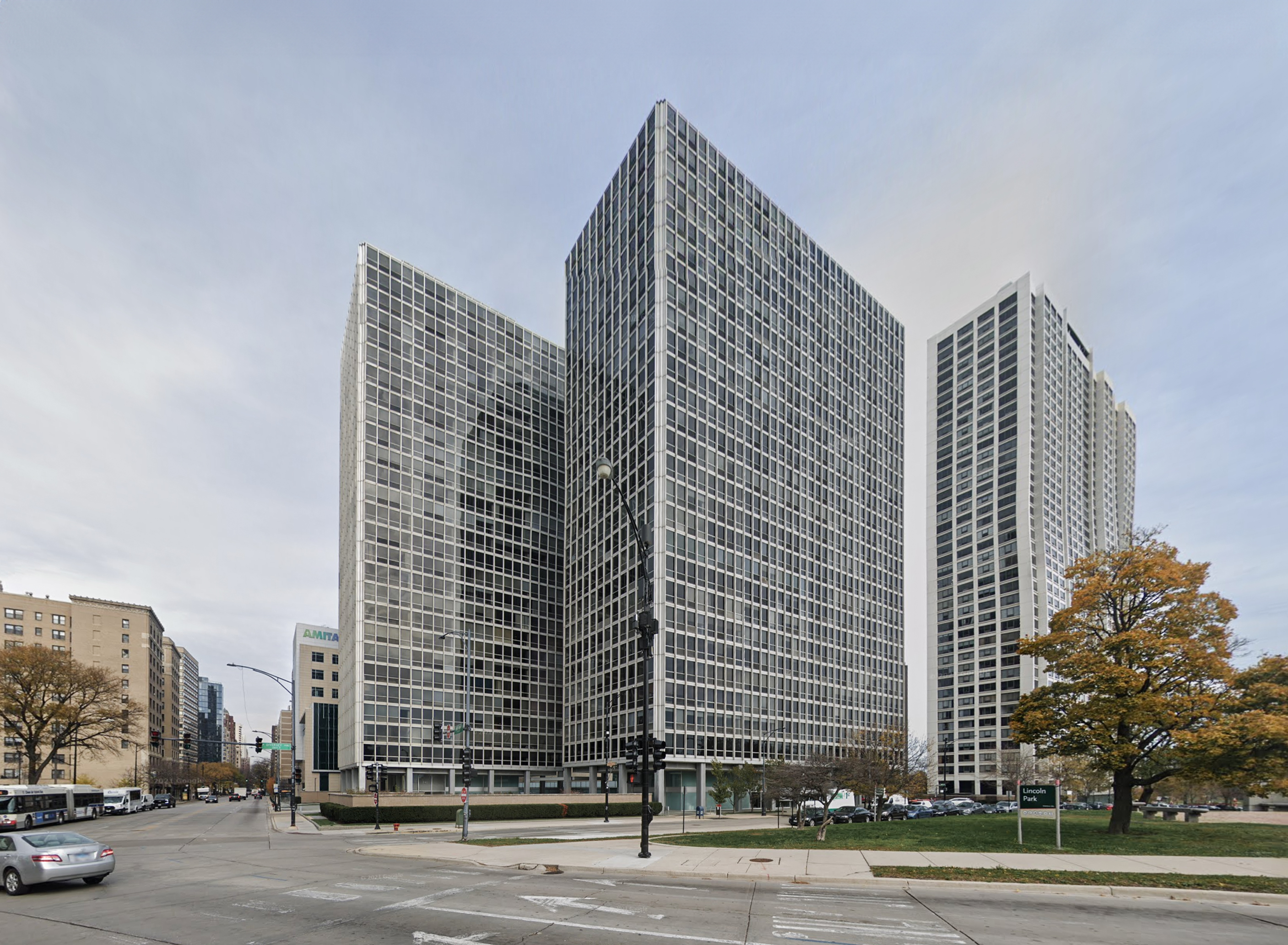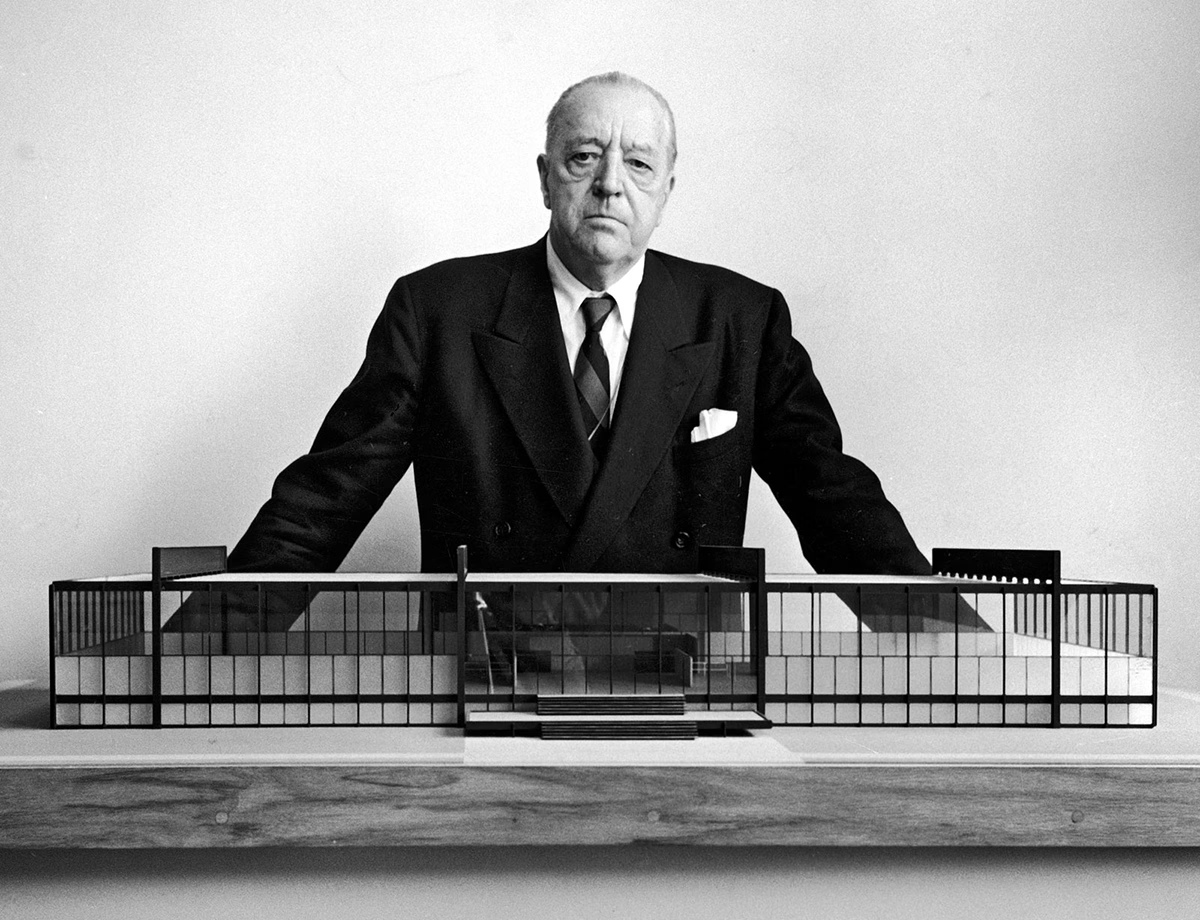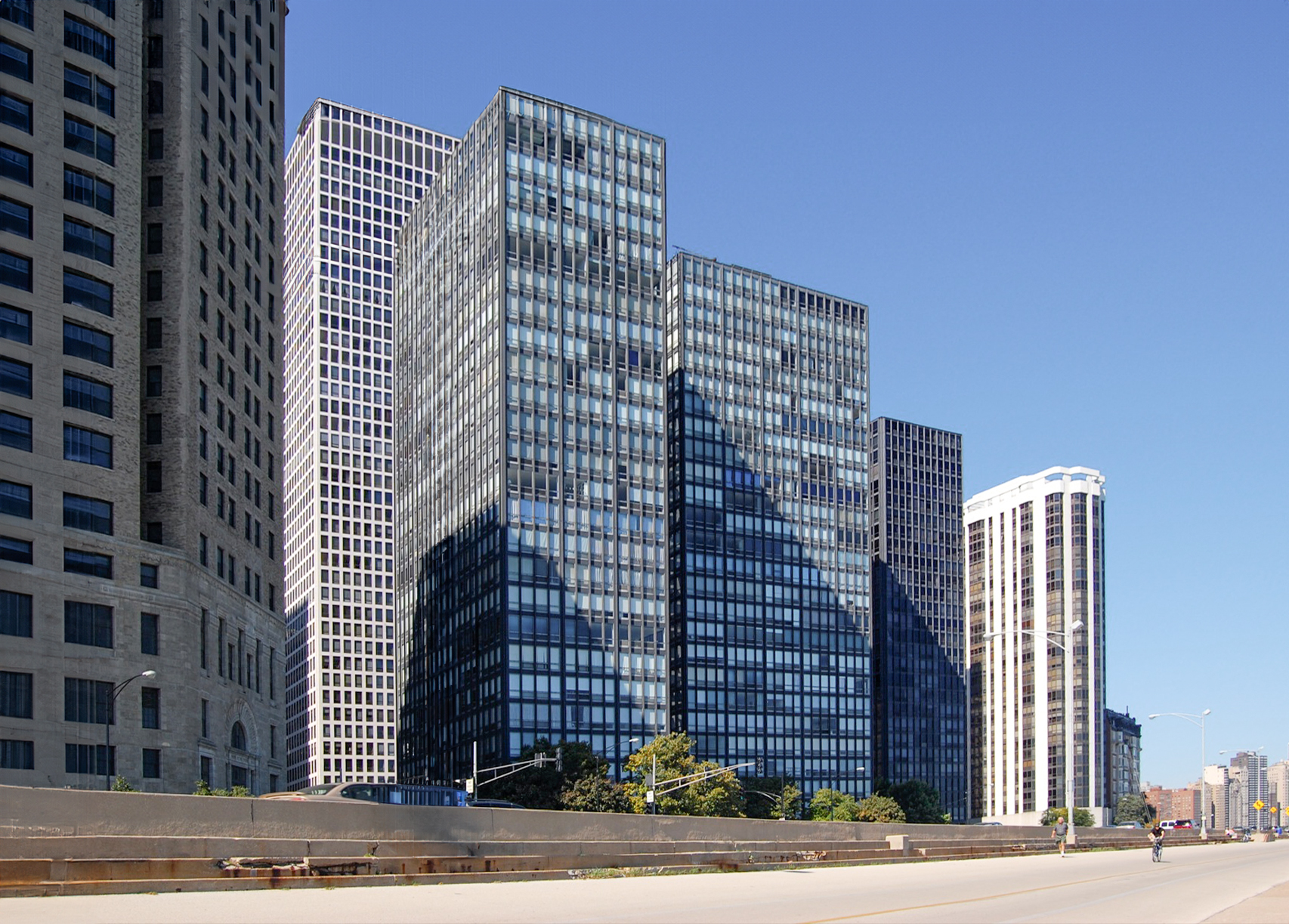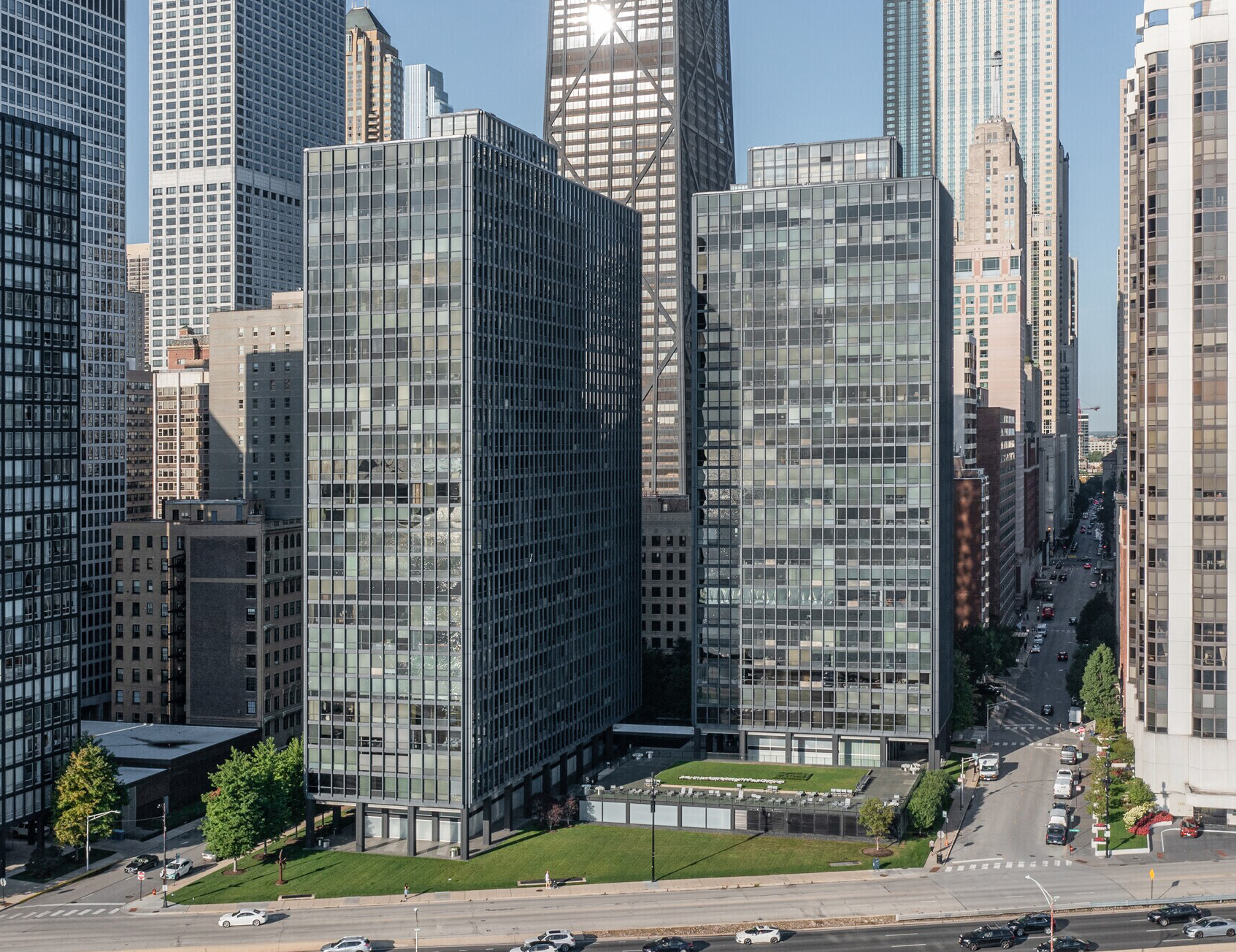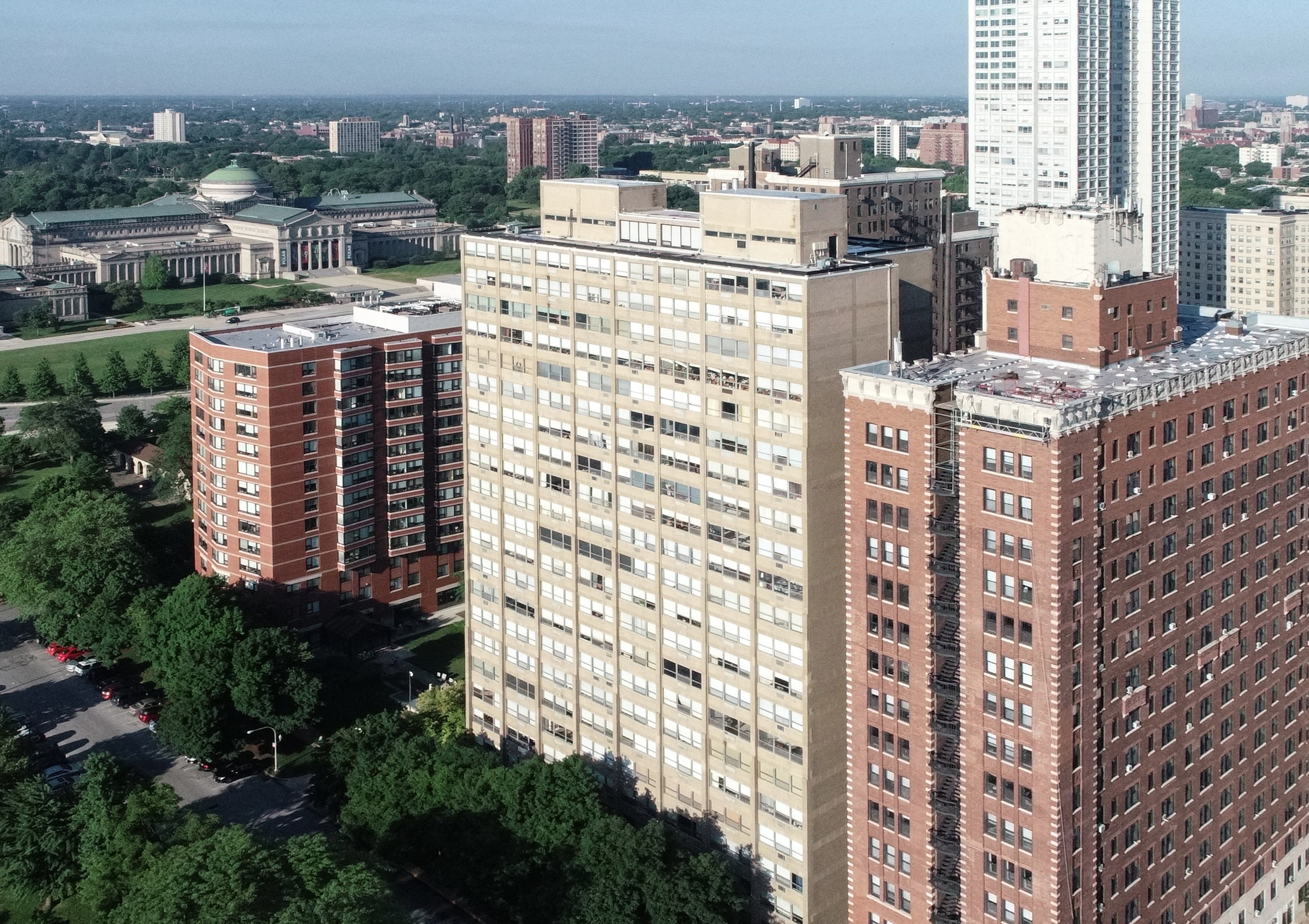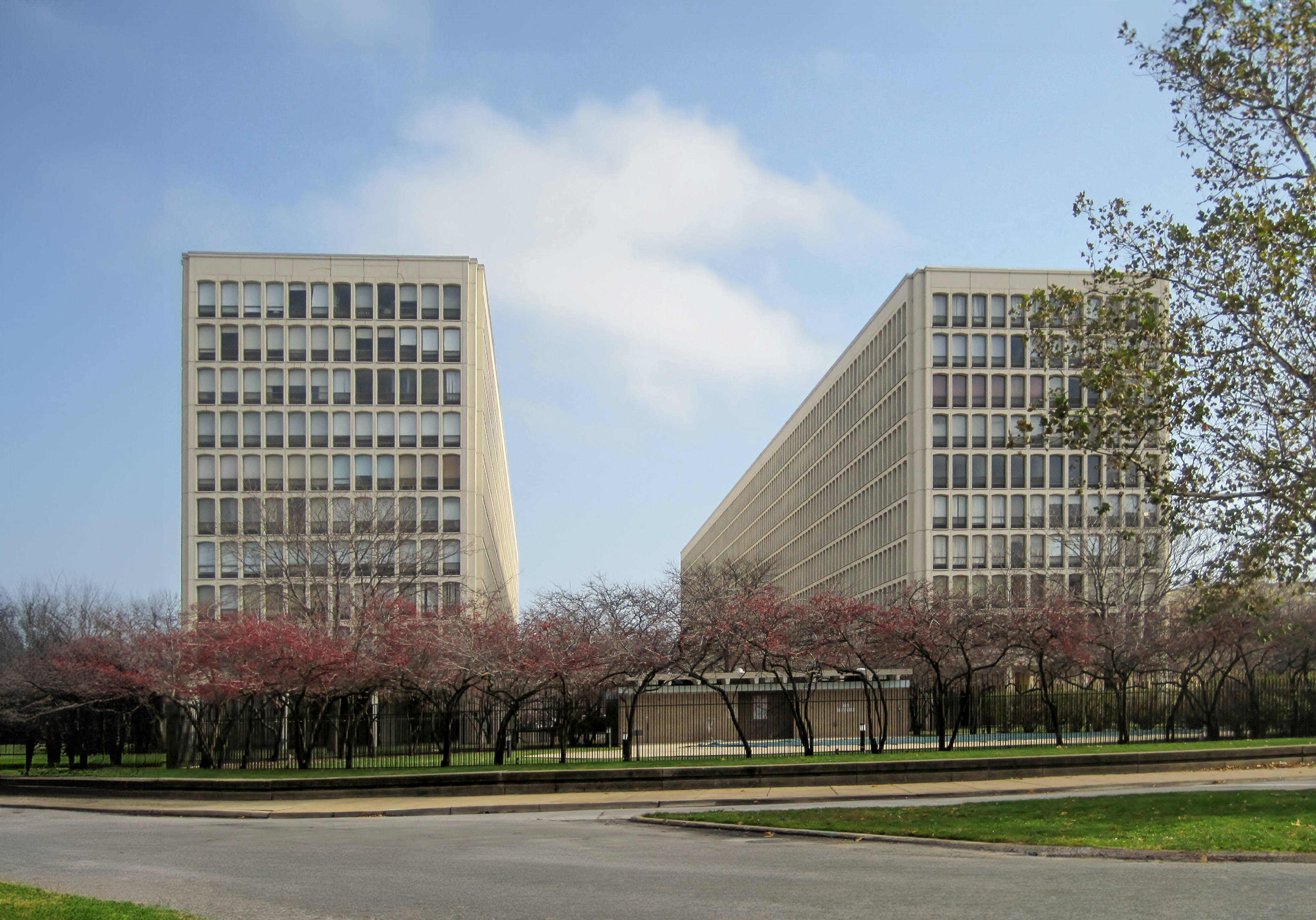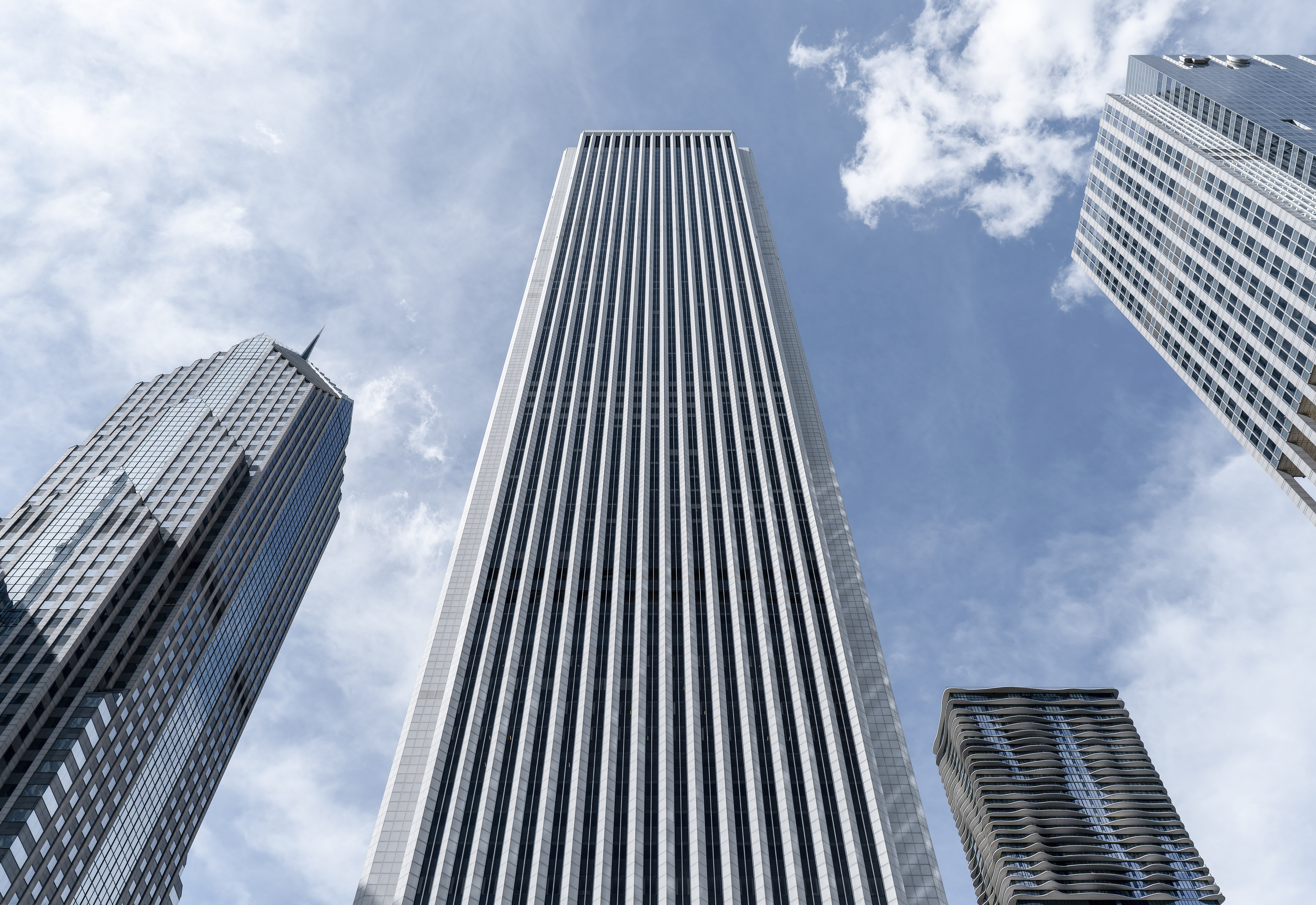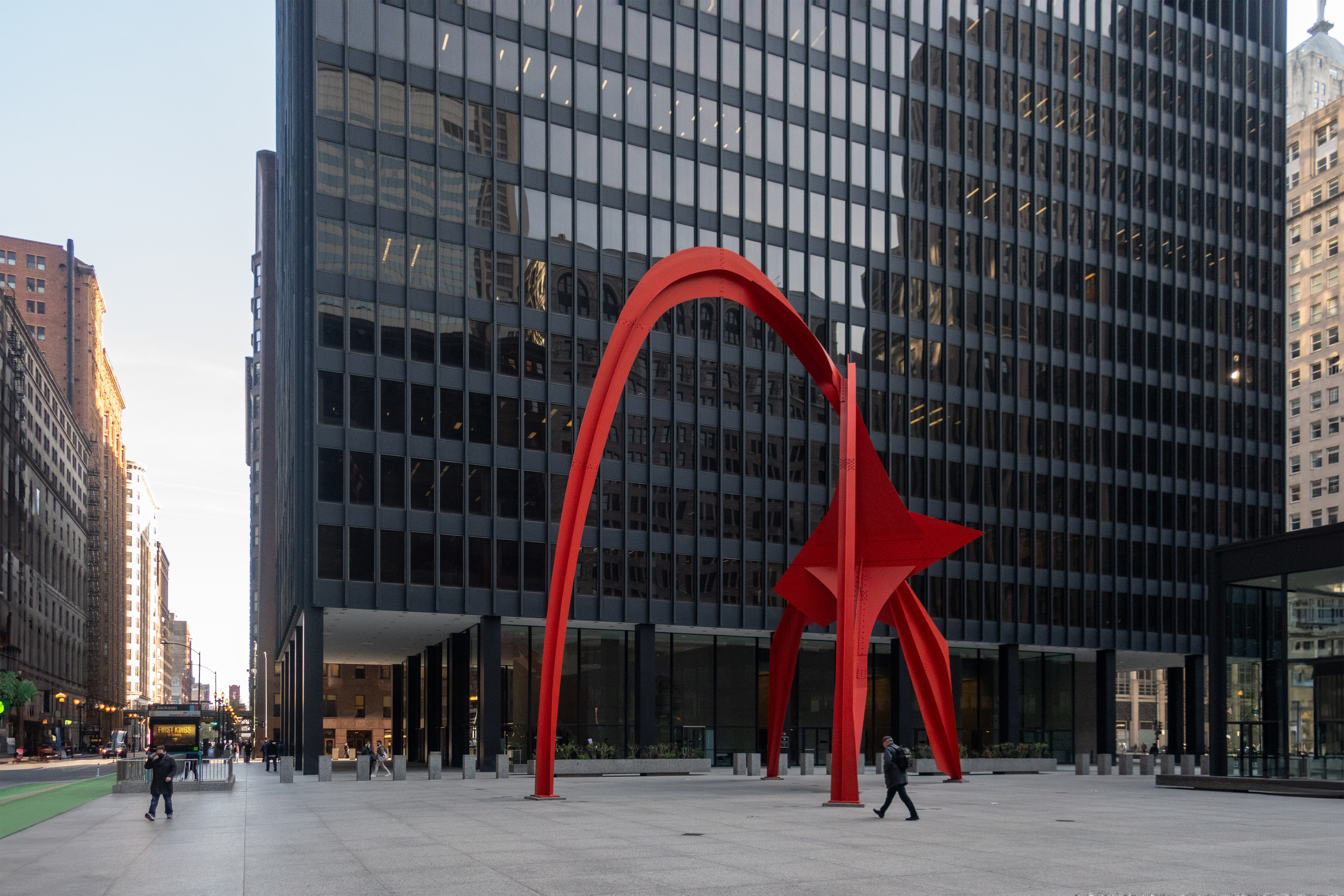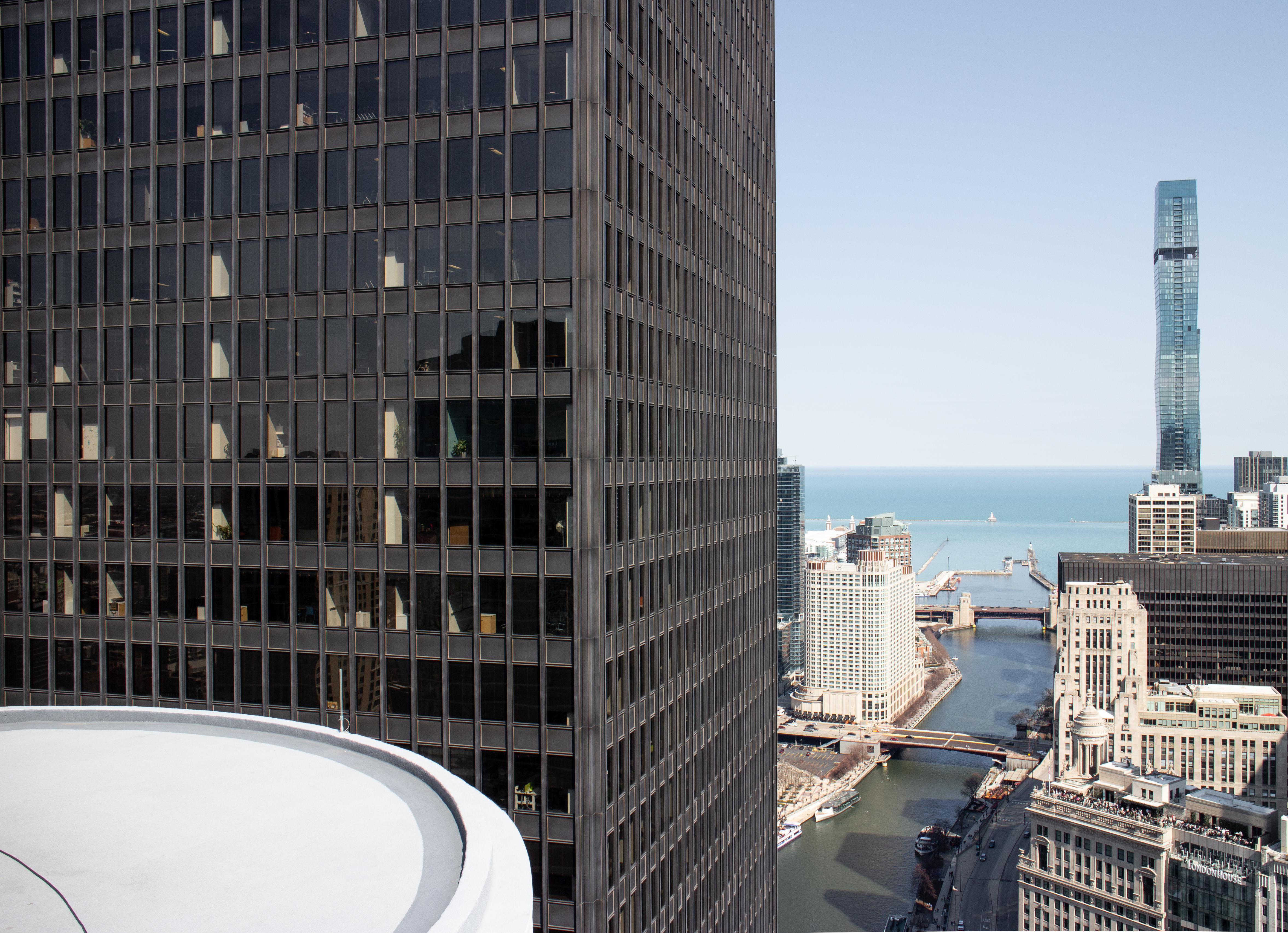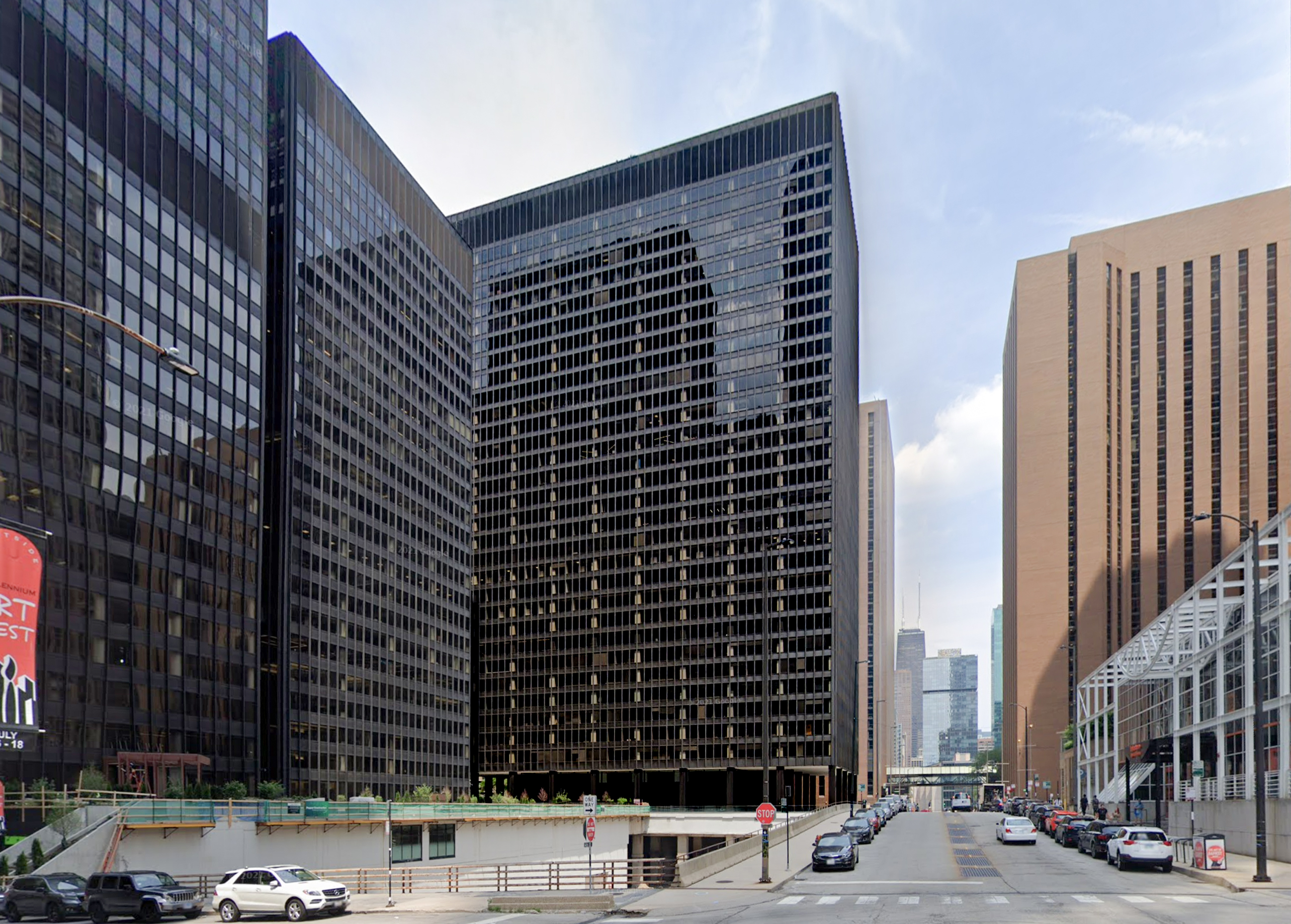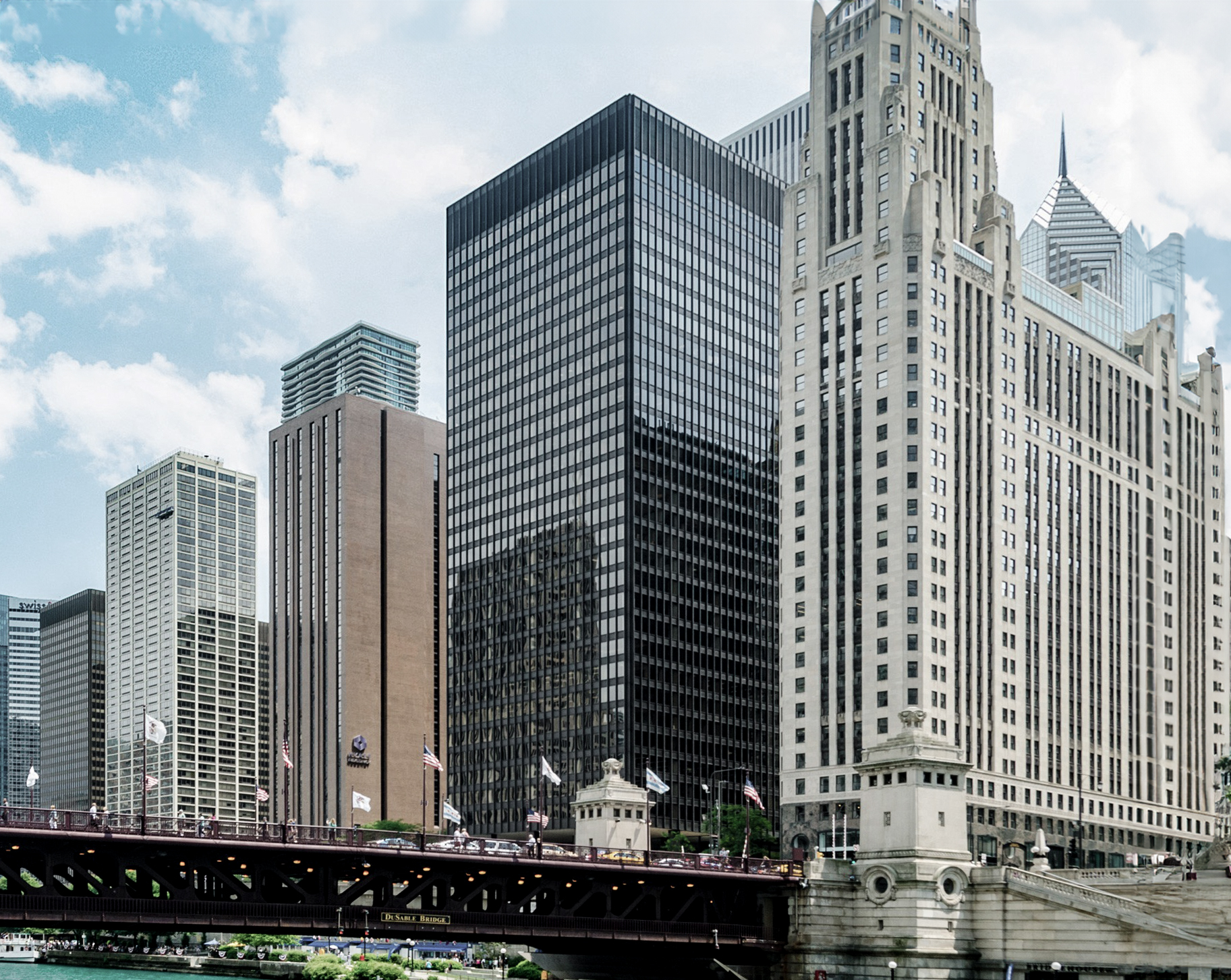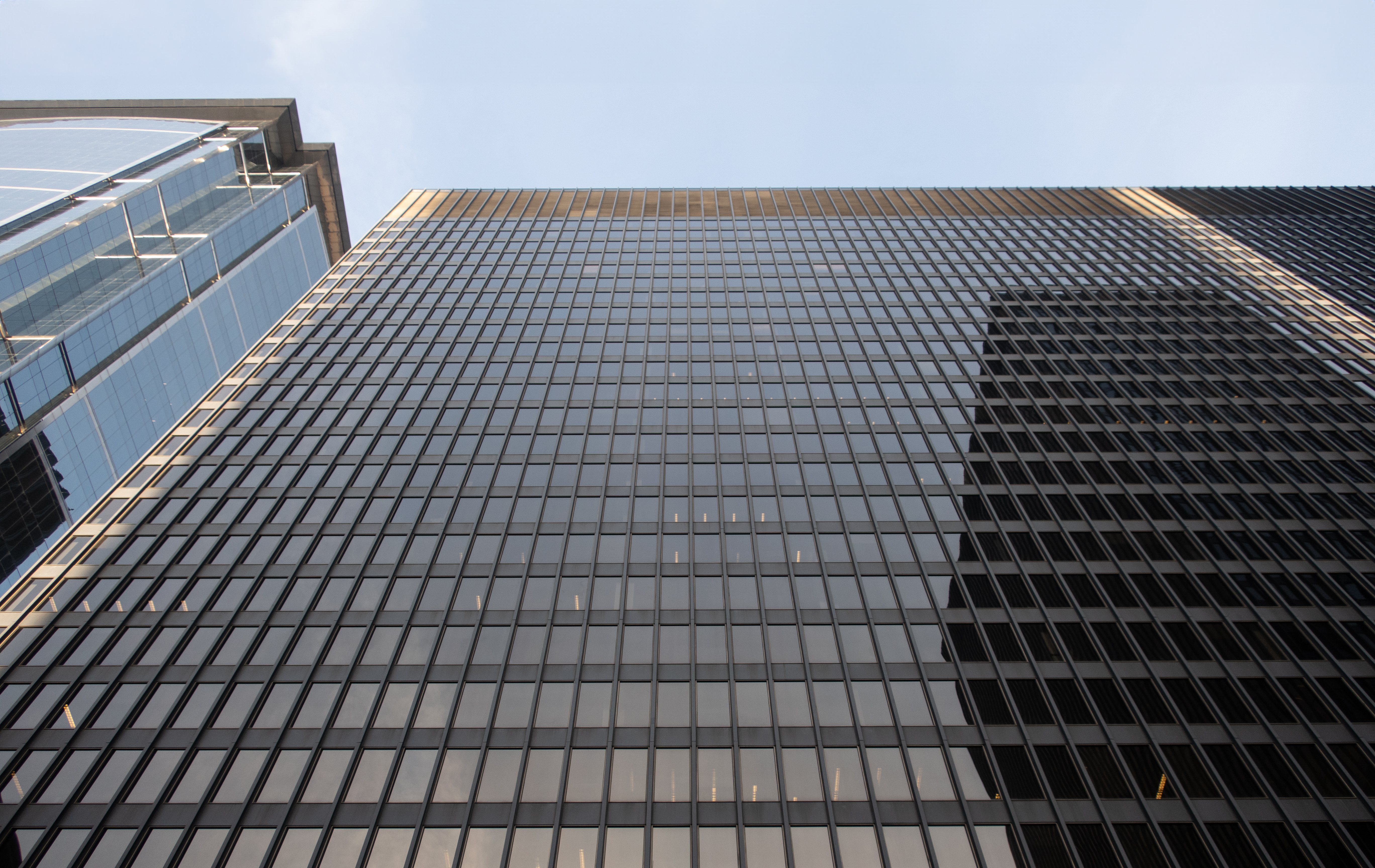The Commonwealth Promenade Apartments is an International Style skyscraper designed by Mies van der Rohe, in association with Friedman, Alschuler & Sincere, and built between 1953 and 1956 in Chicago, IL.
Commonwealth Promenade Apartments is not the only name you might know this building by though. The building is, or has also been known as Commonwealth Plaza East.
Its precise street address is 330 West Diversey Parkway, Chicago, IL. You can also find it on the map here.
The Commonwealth Promenade Apartments consists of two 27-story apartment towers. The original project planned for four towers, but only the southern pair was completed.
